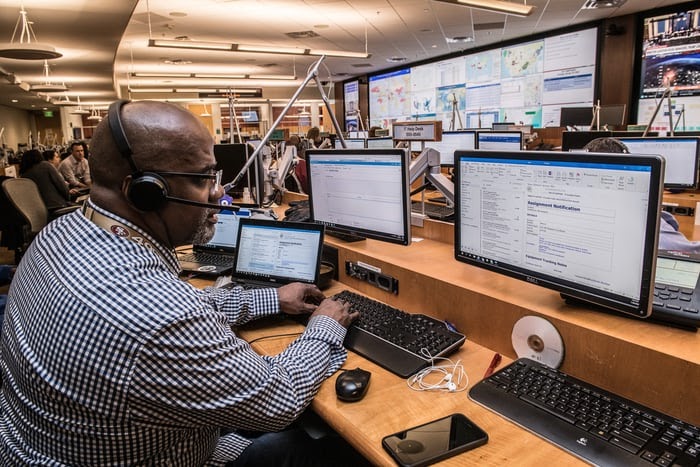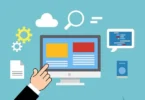The only best way to save time and resources for your clients on their software issues is to set up an effective support that stands to help them whenever these unpredictable or unforeseen events arise.
Hence, developing a multi-tier IT support system means better allocation of resources, choosing the perfect persons for each task, and technically tackling issues with the right techniques, offering the best possible service efficiently.
This isn’t really technical as many think it is; you can either build this system from scratch or categorize your existing support system into different levels.
You wonder how easy it is, right?
To help you with the grunt work and the multiple moving pieces, Hanna Schnaider as an employee of an outsourcing company reveals the exact roadmap you need to follow when trying to build multi-tiered IT support including the methods of distributing responsibilities among support tiers, and how to manage them either internally or when outsourced.
What is IT Support?
IT support also known as Technical support is simply the process of providing support with aid of technology. It is a typical support system designed by companies for offering well-rounded technical assistance to clients and employees.
They are offered to users, providing technical forms of assistance for computers, televisions, mobile phones, or software. These support services are often delivered by technical support executives over the mobile phone, via email, or using specific software.
With such a system in place, companies can provide help to customers whenever issues arise with a product they bought, delivering the best customer experience, and strengthening the brand’s awareness.
However, some of the issues can require a greater technical know-how or expertise due to their complexity hence, the need for a multi-tier support system that handles each customer challenge based on their level of complexity.
Setting Up A Multi-tier IT System
The success of your multi-tier system of an organization will depend on:
- The expertise of each technician on the task assigned to them
- Customer response time agreements
- Accurate escalation of tasks to the appropriate level when complex issues arise.
That said, the multi-tier support system orbits around a 5-tiered IT support system which includes:
Tier 0: Self-support
Tier 0 is often excluded in many companies’ IT support channels but it’s essentially a non-negligible aspect.
Its major role is to help users find answers quickly to their simpler software issues following the support materials provided on the vendor’s websites without having to contact support agents. It’s often referred to as “Self-Support.”
Key Responsibilities
- Offering answers to general or common problems on software functionality.
- Attend to customer’s issues as customers prioritize fast response as one of the attributes of a great customer experience
- Highlight the most popular FAQs
- Provide screenshot, videos, and audio where possible to further show users the step-by-step process to solving their software problems
- Continuously update content to meet the ongoing customer’s needs.
How to Set Up
To effectively deliver a great self-service system, you’ll need to prepare your comprehensive and simplified self-support materials which may include user guides, articles, FAQs, audios, or videos.
After preparation, it is time to upload them on your website for clients to access them.
Whenever there’s an upgrade in your software functionality, it’s also important to ensure you revise your self-support materials and add new information to meet the current demands.
Having the system in place helps reduce the workloads on the L1 agents, allowing them to focus on other demanding tasks.
Overall, self-service is a no-brainer for any company in this modern age as about 40% of customers prefer using this channel to contacting support agents.
Tier 1: Help Desk Or Service Desk
This IT support tier features the L1 agents who tackle simpler issues including hardware configurations, login problems and reinstalling basic applications.
Key Responsibilities
- Take calls from users and creates ticket
- Login to jobs quickly based on provided templates
- Access the knowledge-base to provide quick answers and solutions
- Linking similar jobs and tickets together
- Look for previous or related customer issues and compare them with the present for effective delivery
How to Set Up
Provide selected agents for these tiers with script (step-by-step guides) allowing them to address issues coming to their desks.
Selected agents should be trained and skilled enough to handle issues at this level following the provided scripts carefully and knowing when to transfer difficult tasks to the L2 agents.
It’s additionally important to provide details of the problem, screenshots, the error message, and other relevant information associated with the problem whenever an issue requires escalation to the L2 agents.
Tier 2: Administrative Level Support
Tier 2 also known as administrative level support comprises agents who handle complex issues that are transferred from the L1 agents.
Technicians at this stage have a broader knowledge, understanding, and experience of various hardware and operating systems.
Key Responsibilities
- Investigates logs and accurately possesses a comprehensive knowledge about the software a supported solution is integrated with
- Suggests technical advice and remotely support L1 agents
- They offer timely and relevant helps
- Understanding various operating systems and hardware.
How to Set Up
Since the L2 agents often handle complex issues, it’s important to delegate the tasks to specialists who are well-informed on the particular software.
While some organizations have experts who can handle tasks at this level, others may not have in-house agents skilled enough to solve the L2 tasks.
In such cases, it’s important to outsource to a third party with the required expertise.
Tier 3: Back-end Support
This is the uppermost level in the multi-tier support system consisting of trained experts who can handle difficult and more complex issues skillfully.
It’s also known as high-end or back-end support. The technicians at this level support both L1 and L2 agents to solve complex issues.
Most L3 agents include the architects, developers, or engineers who formed the product
Key Responsibilities
- Research and develop resolutions to unknown issues
- Assesses the time already spent on specific customer issues to prioritize the work
- Ensures that time is utilized sufficiently.
- Performs minor enhancements in supported software
How to Set Up
Agents at this level should feature top experts who understand the coding of the software rigorously.
The support team at this level should be able to tackle software issues at the product’s back end.
This can be engineers or original developers of the product.
If your software product was developed by an outsourcing software company, you can hire the development team to handle the L3 for you.
Tier 4: Support Powered By Software/Hardware Vendors
This basically involves escalating software or hardware vendor problems to other sources beyond the organization. In the real world, L2 and L3 support teams can forward some queries or problems for L4 support to review.
Conclusion
Setting up a multi-tiered support system streamlines the organization’s work process and eases the burden on employees, allowing each specialist to focus on tasks in their area of strength.
However, this is an ongoing effort that may require revisions at every point in time.








Leave a Comment
You must be logged in to post a comment.